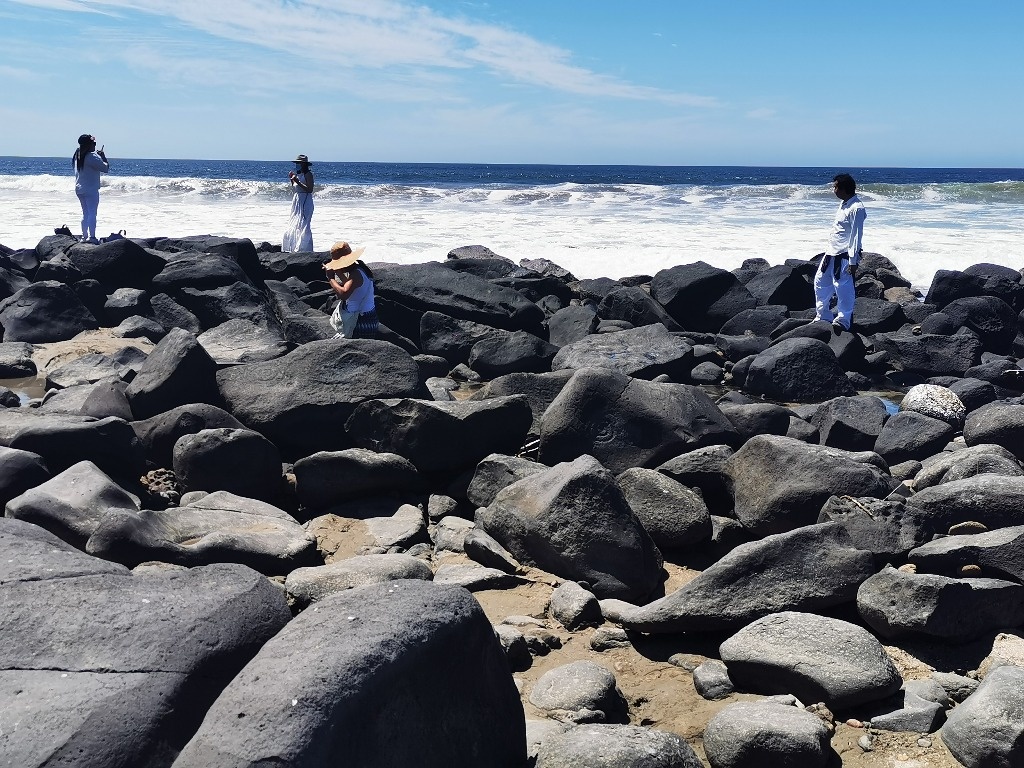Mazatlán, Sin., The Las Labradas archaeological site, located on the beach, in the municipality of San Ignacio, and where there are some 700 rock engravings on volcanic rocks, will open to the public in order to offer conferences on eclipses during pre-Hispanic times. and for the observation of what will occur on April 8.
Servando Rojo Quintero, delegate in Sinaloa of the National Institute of Anthropology and History (INAH), pointed out that for ancient cultures Las Labradas was a ceremonial site for astronomical observation where the Sun was the main element, giving spectacular sunsets, because the site It is within the imaginary line of the Tropic of Cancer.
In the rock engravings you can see flowers, animals, human beings and geometric figures. The site was declared an area of archaeological monuments in 2012 and later a world heritage site by UNESCO.
According to the research that the INAH has been carrying out since 2009, there was a pre-ceramic occupation (7000-5000 BC) before the beginning of agriculture and another late one in which vestiges of ceramics and a sedentary culture (Chicayota culture) linked to the Aztatlan tradition (750-1250).
The official announced that on April 8, about 5,000 visitors are expected to visit the archaeological site, located at kilometer 52 of the toll road, entering the La Chicayota ejido on a dirt road and continuing towards the beach; Mazatlán is about 40 minutes away.
He added that the INAH scheduled two-day activities, which will begin on Sunday with two conferences, one called What is a total solar eclipse?
dictated by astronomer Daniela Gallardo, from the Sinaloa Science Center, and the second Eclipses in pre-Hispanic times
, with archaeologist Víctor Joel Santos Ramírez, from the INAH Sinaloa Center. At night, specialists from the Science Center will guide the observation of the stars.
Gallardo will explain to attendees the characteristic of the celestial vault, what happens when there is an eclipse, the role of the Sun, the Moon and the Earth in this phenomenon.
Rojo Quintero added that the activities that day will include a ritual in a temazcal (steam bath) and will be exclusive for the group of campers who have registered: at least 150 visitors, including from abroad, as well as representatives of some media. international information agencies, who have shown interest in spending the night on the beaches.
He announced that on Sunday entry is free to the place, which also has a museum, and on Monday there is a cost to enter the archaeological zone. He added that 30 INAH elements will monitor the petroglyphs area.
He specified that on Monday, at 9 a.m., attendees will be welcomed. Recommendations will also be made on how to observe the eclipse, that is, not looking directly at the Sun or doing so with special lenses, in addition to hydrating and using sunscreen from the initial phase of the phenomenon, scheduled at 9:52:13 a.m.; the total will be from 11:08:19 to 11:12:46.
He explained that since last year the families of the La Chicayota community have built ramadas, as they have permission to sell food in the archaeological zone, which includes a pre-Hispanic food called beyusa
coming from the agave, since it is intended that the residents benefit and participate in the care of the area.
He explained that the INAH works in coordination with the San Ignacio city council, the Sinaloense Institute of Culture, the Secretary of Tourism, Civil Protection, National Guard, Judicial Police, Firefighters and the Red Cross, in order to provide assistance in the event that be necessary.
#rock #carvings #sea #Las #Labradas #ideal #place #solar #eclipse
– 2024-04-05 17:16:31


